Invisalign® for Teens

Invisalign® represents a modern, low-profile approach to orthodontic care — engineered to move teeth precisely while fitting into an active lifestyle. Unlike traditional fixed braces, clear aligners use planned, gentle forces and digital modeling to create predictable tooth movement with a discreet appearance.

Invisalign® for Teens

Invisalign® for Brides

Invisalign® for Travelers
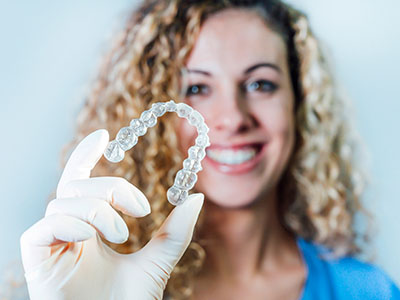
Before & After Photos
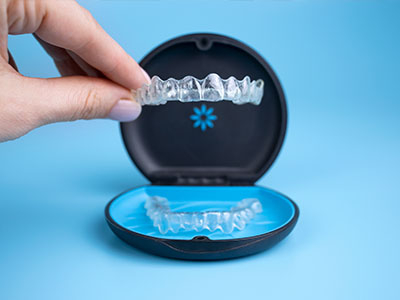
Invisalign® Videos
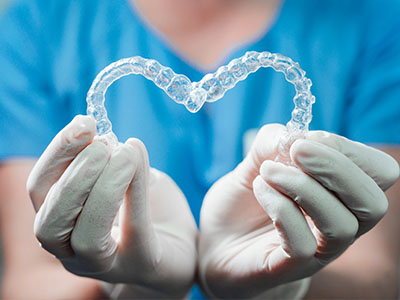
FAQs
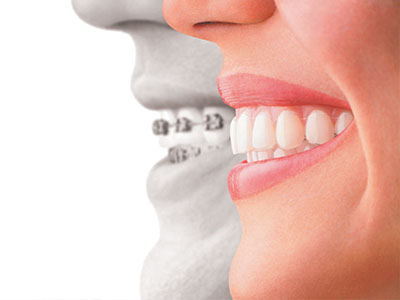
Invisalign® vs Braces
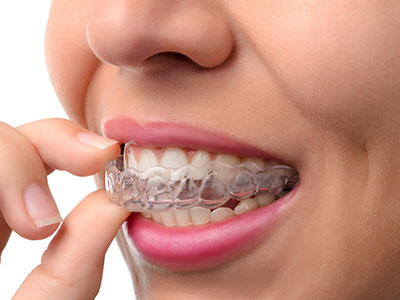
Invisalign® vs Direct-To-Consumer Aligners

Is Invisalign® Right For Me?

Invisalign® Costs
Treatment begins with a detailed digital scan and diagnostic review. Using three-dimensional imaging, your clinician maps current tooth positions and designs a step-by-step plan that visualizes how your teeth will shift from start to finish. This virtual blueprint lets your care team anticipate movements and stage them in a logical, efficient sequence.
Each aligner in the series is manufactured to fit your teeth at a specific moment in that plan. When you progress through the aligner set, the teeth respond to subtle, controlled pressure in the areas the plan targets. Because the entire progression is mapped ahead of time, adjustments and refinements can be made before treatment begins to help achieve the intended outcomes.
Another advantage of this digital-first workflow is predictability. The software and laboratory processes used to create aligners allow clinicians to evaluate biomechanics in advance and set realistic expectations for treatment timing and final appearance. The result is a treatment pathway that balances efficiency, comfort, and clinical control.
Because Invisalign® aligners are removable, they bring practical benefits to daily life. Eating, oral hygiene, and special events are easier to manage since aligners are taken out for short periods. For many patients, that flexibility is a decisive factor when choosing a treatment option that fits long-term routines.
Modern aligner materials are engineered for comfort and durability. Clear aligners sit close to the tooth surface, minimizing the irritation commonly associated with metal brackets and wires. At the same time, they provide enough force to guide teeth steadily toward their planned positions.
Progress through treatment by switching to the next aligner in the sequence at the intervals recommended by your provider. Small, intentional changes accumulate into meaningful improvement over time, and routine check-ins help track that progress and confirm the plan remains on target.
Newpoint Family Dental tailors Invisalign® care to fit individual needs, combining clinical judgment with the digital tools that make aligner therapy effective for a broad spectrum of patients.

The process begins with a dedicated consultation where your clinician evaluates your oral health, alignment goals, and any functional concerns. This step ensures that aligner therapy is an appropriate option and establishes the clinical priorities that will guide treatment.
Using digital scans and photographs, your provider creates a comprehensive record of your starting point. These records form the basis of a customized treatment plan that outlines each stage of tooth movement and the expected progression.
During this visit, your clinician will also discuss realistic outcomes and any adjunctive treatments that may improve predictability, such as interproximal reduction or attachments, if they are clinically indicated.
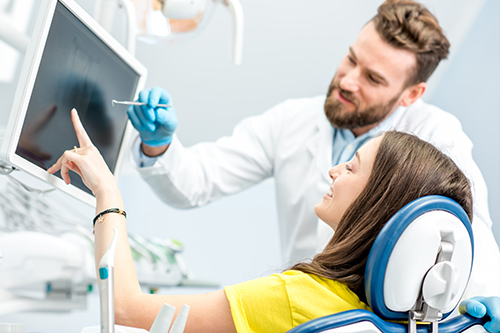
One of the defining features of modern aligner therapy is the ability to preview how teeth will move from the initial position to the desired outcome. This visualization helps patients and clinicians agree on objectives and refine the plan before fabrication begins.
The treatment roadmap includes the number of aligners expected, estimated timing, and any specific movements that require special attention. With this information, you’ll understand what to expect at each milestone of care.
Because the plan is created digitally, the team can make adjustments and simulate alternative approaches when necessary, allowing for thoughtful decision-making rather than on-the-fly changes.
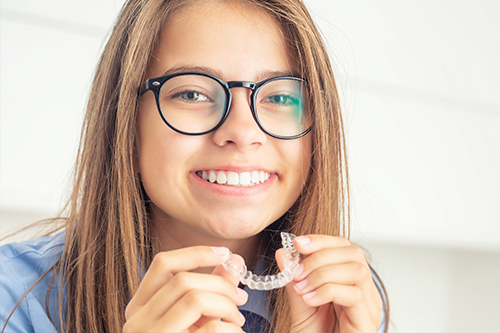
Aligners are produced to match the precise contours of your teeth at each stage of the plan. They fit snugly and are easy to wear, with materials designed to maintain shape and force delivery through daily use.
Clinicians often place small, discreet attachments on specific teeth to help aligners apply targeted pressure where necessary. These attachments are tooth-colored and placed only when they enhance the predictability of certain movements.
Regular monitoring appointments allow your provider to verify that progression aligns with the plan and to make refinements if needed. This clinical oversight is an important part of ensuring you get the outcomes you expect.

As you near the final aligner, your clinician will evaluate the result and discuss retention strategies to help maintain alignment. Retainers are commonly recommended to keep teeth in their new positions after active movement has finished.
Retention plans vary based on individual needs; some patients use removable retainers, while others have bonded options. Your provider will tailor the approach to support long-term stability and oral health.
With good habits and the recommended retention protocol, many patients enjoy the lasting benefits of their alignment work. Follow-up care helps ensure the smile stays healthy and aligned for years to come.
Choosing an aligner-based approach is as much about lifestyle as it is about clinical outcomes. For people who value discretion, comfort, and the ability to maintain normal eating and hygiene routines, Invisalign® offers a contemporary alternative to traditional braces without compromising treatment control.
Our team at Newpoint Family Dental combines clinical experience with the digital tools that support modern orthodontic care. If you’re curious whether aligner therapy is right for your smile, we encourage you to get in touch and arrange a consultation to review your options and the steps involved.
Explore the true stories and journeys of several Invisalign® patients
*Invisalign® is a registered trademark of Align Technology, Inc.
Invisalign® uses a series of clear, removable aligners to apply controlled pressure and guide teeth into their planned positions. Each set of aligners is designed from a 3‑D digital plan that maps tooth movement in incremental stages, which makes the overall process highly predictable. Because aligners are low profile and removable, many patients find them less intrusive on daily routines than fixed metal brackets and wires.
The digital workflow and custom fabrication allow clinicians to anticipate specific tooth movements and make refinements before treatment begins. Aligners sit close to the tooth surface and are made from materials engineered for comfort and consistent force delivery. This combination of planning, material science, and clinical oversight distinguishes aligner therapy from traditional orthodontic appliances.
Digital treatment planning begins with an intraoral scan and diagnostic review that captures precise tooth positions and jaw relationships. Using 3‑D visualization, clinicians can create a step‑by‑step roadmap showing how teeth will move and where attachments or auxiliary procedures might be helpful.
This virtual preview enables the team to simulate outcomes, adjust the sequence of movements, and set realistic expectations for timing and staging. The ability to refine the plan before aligners are fabricated increases predictability and helps avoid unnecessary midcourse changes.
Many adults and teenagers with mild to moderate alignment and bite concerns are suitable candidates for Invisalign®, provided their oral health is stable and they can follow the wear schedule. Complex skeletal discrepancies or severe malocclusions may require alternative or adjunctive treatments, but aligner therapy can often address a wide range of tooth movements when planned appropriately.
A candidacy assessment includes evaluating periodontal health, existing restorations, and the specific teeth that require movement. Your clinician will determine if aligners alone are appropriate or if additional procedures such as attachments, interproximal reduction, or staged treatment will improve predictability.
Treatment typically begins with a consultation, digital scans or impressions, and the development of a customized treatment plan that outlines each aligner stage. Once the aligner sets are fabricated, patients switch to a new aligner at the intervals recommended by their provider and attend periodic checkups to monitor progress and confirm fit.
The overall duration varies by case complexity and patient compliance, ranging from several months to more than a year for some plans. Regular monitoring allows clinicians to make refinements or order additional aligners if small adjustments are needed to achieve the intended outcome.
Good oral hygiene is essential during aligner treatment; remove aligners before eating and brush and floss thoroughly before reinserting them to reduce the risk of staining or decay. Clean aligners daily with a soft brush and luke‑warm water or manufacturer‑recommended cleaning solutions, avoiding hot water that can warp the material.
Store aligners in their case when not in use to protect them and reduce exposure to contaminants. Maintaining routine dental cleanings and checkups during treatment helps the team monitor oral health and address any issues promptly.
Most people experience only a short adaptation period during which speech may be slightly altered, often resolving within a few days as the tongue adjusts to the aligners. Because aligners are removable, they allow patients to maintain their usual eating habits and oral care routines with minimal interruption, which many patients find convenient for social and professional activities.
Aligners should be worn for the majority of each day as directed by the clinician to ensure predictable movement, but they can be taken out for eating, important events, or oral hygiene. Patients should follow wear and care instructions closely to avoid delays in treatment progress.
Attachments are small, tooth‑colored composite shapes bonded to specific teeth to help aligners apply targeted forces for complex movements such as rotations or extrusions. They act as grips that improve the aligner's mechanical advantage and increase the predictability of certain tooth movements that are difficult to achieve with aligner geometry alone.
Attachments are planned during the digital case setup and are removed or smoothed when they are no longer needed. Their placement is minimally invasive and designed to blend with the tooth surface while providing measurable clinical benefit when indicated.
Progress is monitored through scheduled checkups that may include clinical examinations, progress photos, or periodic digital scans to compare current tooth positions with the planned trajectory. These reviews allow the clinician to confirm that tooth movements are tracking as expected and to identify any areas that require refinement.
If teeth do not move as planned, the care team can order refinement aligners, modify the treatment sequence, or recommend adjunctive measures to address specific challenges. This ongoing clinical oversight is key to achieving the intended outcome and ensuring patient comfort and safety throughout treatment.
Retention is a vital phase that follows active aligner treatment and helps maintain the new tooth positions over time. Common retention options include removable retainers and bonded (fixed) retainers; the choice depends on the movements corrected, patient preferences, and long‑term stability considerations.
Your clinician will recommend a retention protocol tailored to your case, which often involves full‑time wear initially followed by gradual transition to nighttime use. Regular follow‑up appointments help ensure the retainer fits properly and that alignment remains stable.
To determine whether Invisalign® suits your needs, schedule a consultation where the clinician will review your dental and medical history, perform an oral exam, and capture digital scans or records to evaluate alignment and bite relationships. During this visit you can discuss your goals, ask about the treatment roadmap, and learn which adjunctive measures may improve predictability.
Newpoint Family Dental offers comprehensive consultations that use digital diagnostics to create a clear treatment plan and preview potential outcomes. If you would like to explore aligner therapy, contact the office to arrange an evaluation and start a personalized treatment discussion.
Our mission is to help every patient enjoy healthy teeth and a confident smile, providing care that meets your needs and exceeds expectations.
